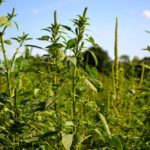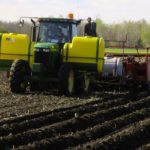
A drone spots a problem in your field. Now what?
Drone-mounted cameras measuring NDVI reflectance can identify crop problems, but not necessarily the cause. Researchers are looking for other tools that might

Farm like Scrooge
A long-term study suggests that penny-pinching can actually help the bottom line

The U.S. ‘No. 1 weed problem’ heads north
Other weeds are higher priority for now, but be on the lookout for Palmer amaranth

PHOTOS: How to identify Palmer amaranth

Avoiding another year of ‘snirt’
North Dakota farmers and researchers are finding success in controlling soybean field erosion by planting cover crops

Nutrient balance key to avoiding sulphur deficient soils
Production of more high-sulphur demand crops such as pulses and canola is creating a shortage in some fields

Tillage erosion costing farmers billions
The pressure to get an early start on newer crops such as corn and soybeans encourages tillage practices which may not be sustainable

Another item to put in rotation
A new tool can determine which blackleg genes are in a field, allowing growers to choose a variety that will prolong the life of their resistance genetics

Protect your midge-tolerant wheat
The midge-tolerance gene was found in the majority of SWS wheats in 2017. Refuge seed is required to keep this trait in play

Growing potatoes without chemicals
Organic potato production on a commercial scale is a challenge, but one Ontario grower is meeting it


